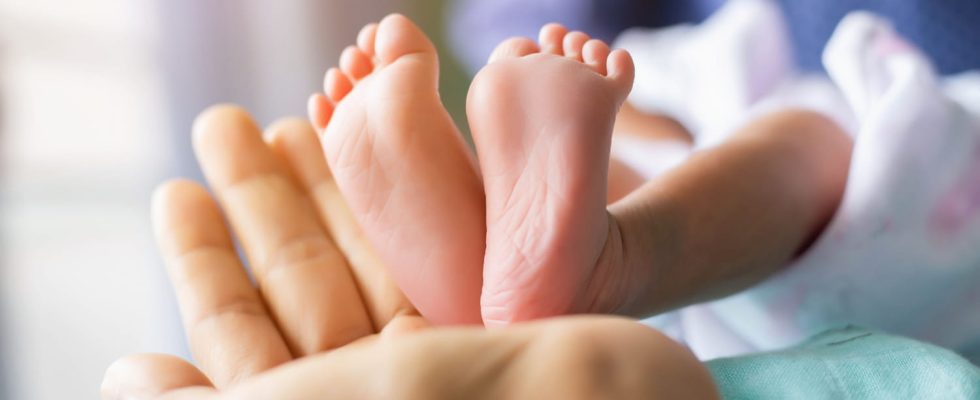Varus, equine… Clubfoot refers to a malformation of the foot that develops in the fetal stage. It can be diagnosed from the second prenatal ultrasound. How to treat clubfoot?
Clubfoot refers to a malformation of the foot that occurs in the fetal stage. “It’s a pathology quite frequent since 1 to 2 children per 1000 births in France are affected. Most often these are the boys who are affected and in one out of two cases, both feet are affected”, explains Dr. Nicolas Henric, orthopedic surgeon at the mother-child center of the CHU d’Angers. What is a club foot? How to diagnose it? And what operation makes it possible to cure ?
Definition: what is clubfoot?
Clubfoot is a congenital anomaly of foot developmentthat is, which occurs during the fetal period. Half are detected by antenatal ultrasound. Visually there is a retraction of all tissues of the foot around the ankle“, explains Dr. Nicolas Henric
► Varus and valgus clubfoot. Clubfoot is called “varus” when the sole of the foot is turned inwards, of valgus when it is outward.
► Equine clubfoot. We also speak of “equine” clubfoot when the tip of the foot is pointing downward. Idiopathic, that is to say not linked to another pathology.
The interest is to diagnose in-utero and to make a consultation with a pediatric orthopedic surgeon in prenatal to be able to expose to the parents the various techniques which exist to correct it.
What causes clubfoot?
Clubfoot is a congenital malformation the cause of which is not determined.
There are two great techniques :
► One rehabilitation technique which will vary according to the schools but whose principle is always the same. “We will try to work very energetically 5 to 6 times a week for 1 hour to mobilize the foot and bring it back into line little by little. The physiotherapist will set up a restraint system to hold the foot. And this, for almost three months, is what makes this care difficult. It also requires a really specialized physiotherapist, at the risk of having sequelae”, emphasizes the specialist.
“The treatment is going to be lifelong in a way.”
► The second technique is the so-called Ponseti technique. “It costs less and is less time-consuming. It is also work to reduce deformation: we will put on plasters gradually, once a week, for 6 weeks. It goes from the top of the thigh to the end of the toes, we will first bring the forefoot in the overall axis of the foot. The problem with this technique is that in almost all cases, we will have to perform an Achilles heel tenotomy, which requires at least a local anesthesia between 6 and 10 weeks of life, which is not unusual. The advantage is that there is only one consultation per week” continues the pediatric orthopedic surgeon.
“Behind, the treatment is not finished, it will last a lifetime in a way. After the tenotomywe put plasters on for a month and then we put on splints that we will keep day and night for 3 years then every night until the age of 5″ says Dr. Henric.
What is the operation for clubfoot?
The techniques mentioned above make it possible to avoid subjecting children to major posterior release surgery which leaves a large scar on half of the leg to the big toe. “The operation is not reserved only for very severe recurrences clubfoot and unfortunately this is something that can happen during growth. These are children that we will follow throughout their development. When we manage to treat clubfoot, children will not have major anomalies, the goal is to make their foot as normal as possible.“concludes the specialist.
Thanks to Dr Nicolas Henric, orthopedic surgeon at the Mother Child Center of the CHU d’Angers.
